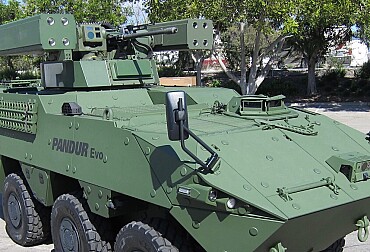The dual-edged sword: Starlink's role in the Ukraine conflict
In a twist of events that underscores the complexities of modern warfare, SpaceX's Starlink satellite devices, initially lauded for their crucial support to Ukraine, now seem to also be aiding Russian forces within the embattled nation. This development raises profound questions about the role of technology in conflict zones and the responsibilities of corporations like SpaceX, led by Elon Musk, in ensuring their innovations do not inadvertently support adversarial actions.

Unintended consequences
The revelation that Russian forces are utilizing Starlink services in Ukraine has come as a significant blow to many. Starlink, known for its high-speed internet capabilities via a constellation of satellites, was celebrated for providing Ukrainian forces with a vital communication lifeline. However, reports indicate that the very same technology is now being exploited by Russian troops, with dozens of Starlink terminals spotted along the front lines. This situation presents a paradox where technology designed to aid in defense is also being used to bolster offensive capabilities against the same benefactors.
The Ukrainian perspective
Ukrainian military personnel first noticed the adversary's use of Starlink several months ago, with indications that the usage is on the rise. The implications are dire, with one source ominously noting, "When they have hundreds, it’ll be hard for us to live." This development exacerbates the already daunting challenges faced by the Ukrainian military, which contends with a significant ammunition shortfall compared to its adversary.
The reaction from SpaceX
In response to these unsettling developments, SpaceX has publicly distanced itself from any transactions with the Russian government or military. The company asserts that Starlink is not intended for use in Russia and that any claims of its availability in the country are misleading. Despite these assurances, the reality on the ground in Ukraine tells a different story, with Starlink terminals making their way into Russian hands through third-party purchases.
The technical and ethical dilemma
The use of Starlink by Russian forces poses both a technical challenge and an ethical quandary for SpaceX. The company has demonstrated the capability to restrict access to its services, as evidenced by denying a request to activate Starlink in Russian-occupied Crimea. Yet, the potential for Russian forces to disguise their usage of Starlink complicates efforts to prevent its exploitation. Experts suggest that Russia could manipulate GPS signals to mislead the system about the terminal's location, a tactic that could undermine efforts to control the technology's use.
The broader implications
The situation highlights a broader dilemma faced by technology companies involved in conflict zones. The dual-use nature of many modern technologies means that they can be used both for legitimate defense and unauthorized aggression. Companies like SpaceX must navigate these treacherous waters, balancing the benefits of their technologies against the potential for misuse. The case of Starlink in Ukraine serves as a stark reminder of the unintended consequences that can arise when cutting-edge technologies are introduced into complex geopolitical conflicts.
In conclusion, the unfolding situation with Starlink in Ukraine exemplifies the double-edged nature of technological advancements in warfare. As companies like SpaceX grapple with the unintended uses of their technologies, the international community must also consider the broader implications of such dual-use capabilities. The challenge lies in harnessing the benefits of these innovations while minimizing their potential for exacerbating conflicts.








